Last month I published a blogpost about Progress 8 scores for pupils with special educational needs met by a statement or education, health and care plan (EHCP).
A throwaway remark that “over half of pupils with SEN met by a statement/EHCP in the 2017 Year 11 cohort were in special schools” surprised a number of readers who know far more about provision for pupils with SEND than I do. Cue much double-checking of my calculations. Reassured, I thought I’d take a look at what’s being going on over the last few years.
Department for Education data on SEN provision shows that the proportion of pupils with statements/EHCPs attending special schools has been increasing since 2007 [PDF]. By contrast, the percentage attending secondary schools has fallen by a similar amount. The percentage attending primary schools has remained fairly constant and there has been a small increase in the percentage attending other settings such as independent schools, alternative provision and non-maintained special schools. These trends are displayed in the chart below.
But this chart doesn’t tell the whole story. A population bulge has been working its way through primary schools. So while the number of pupils with statements/EHCPs in state-funded primary schools has remained fairly constant since 2007, the total primary-age school population has increased by over 10%.
This can be best illustrated by looking at the number of pupils in Years 1 to 6 with statements/EHCPs as a percentage of all pupils in Years 1 to 6. In the chart below we can see that this figure has been falling in mainstream primary schools. In special schools, it remained fairly constant until around 2011, since when it has been rising at an increasingly quick rate.
Now let’s do the same for pupils in Years 7 to 11. This shows much the same thing, although the percentage of pupils in mainstream schools has fallen at a faster rate.
Overall, in number terms, the total number of secondary-age pupils with statements/EHCPs who attend special schools has remained fairly constant, rising slightly (by 8%) since 2011 even though the number of secondary-age pupils has fallen slightly over the same period (and the rate of secondary pupils with EHCPs has fallen). This is best shown in the next chart.
The population bulge that started working its way through the primary sector around 10 years ago is now moving through the secondary sector. The latest DfE projections for Years 7 to 11 estimate that the state-funded secondary age (11-15) population will grow by 15% (427,000 pupils) between 2018 and 2027.
Let’s say 3.6% will have EHCPs – broadly the current figure. That’s another 15,000 pupils compared to 2018. The underlying data [CSV] behind the population projections anticipate that special schools will take 9,000 of them. Given that the average special school has 117 pupils, that’s almost 80 schools’ worth. A cap on the number of special free school bids has been lifted as part of plans announced by DfE before Christmas.
Presumably it is anticipated that the remaining 6,000 pupils will go to mainstream schools or other settings such as independent schools, non –maintained special schools and alternative provision. If mainstream schools do increase numbers of pupils with EHCPS this will reverse many years of declining numbers of pupils with statements/EHCPs.
The three questions this raises are whether:
- there is still the expertise and resource within the mainstream sector to take these pupils on;
- there is sufficient funding to meet the expectation that mainstream schools are responsible for the first £6,000 of additional funding for pupils with SEND and, relatedly, whether the current funding arrangements based on lagged pupil numbers is sufficiently responsive to rising numbers of SEND pupils; and
- the performance of pupils with EHCPs as measured by Progress 8 acts as a disincentive to their enrolment at mainstream schools.
Want to stay up-to-date with the latest research from FFT Education Datalab? Sign up to Datalab’s mailing list to get notifications about new blogposts, or to receive the team’s half-termly newsletter.




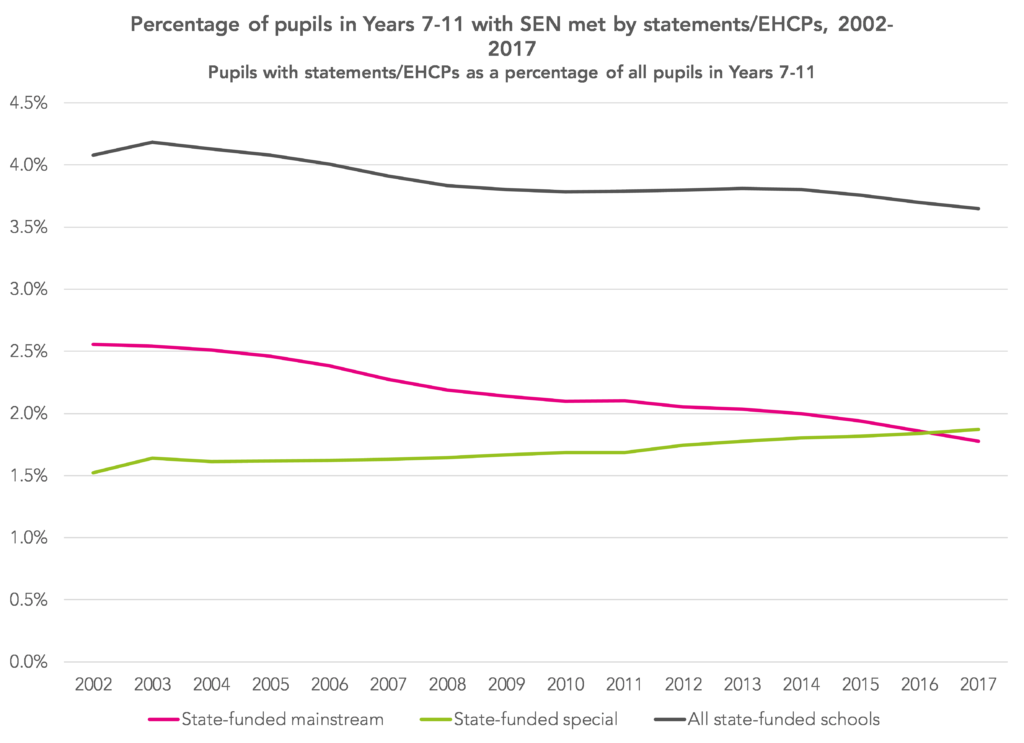
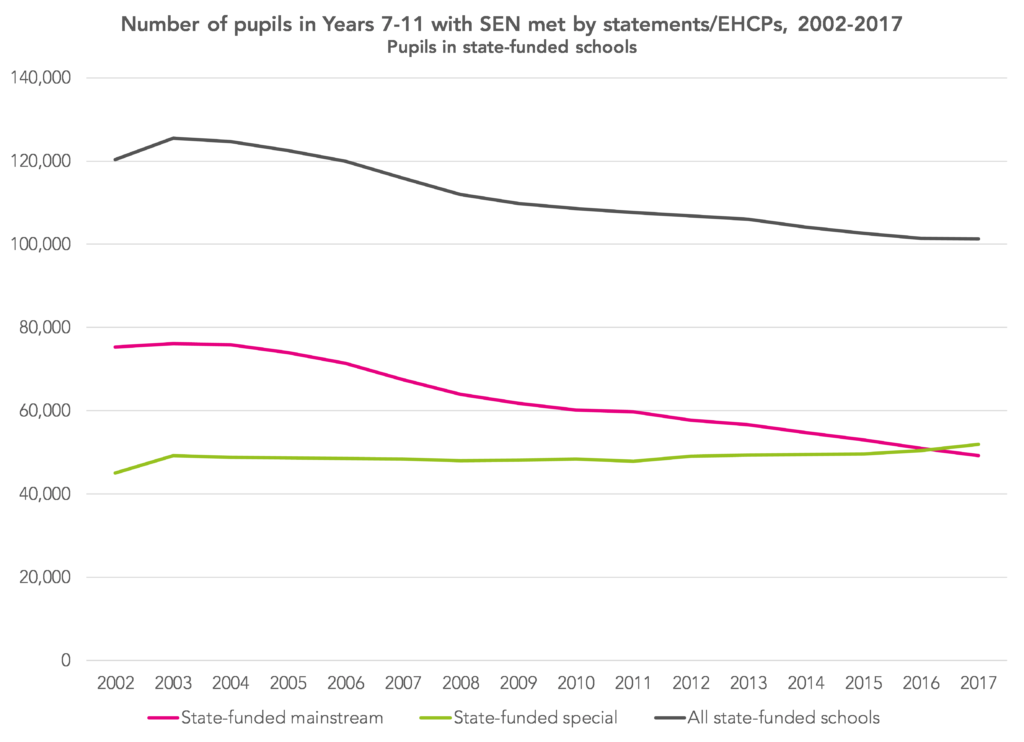

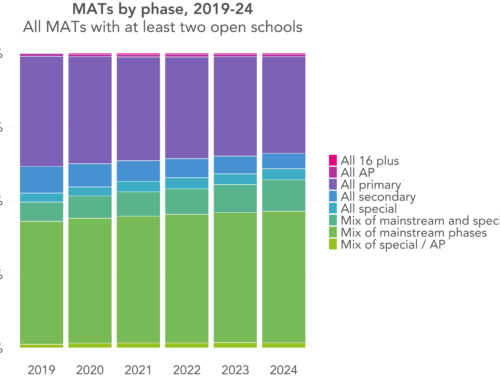
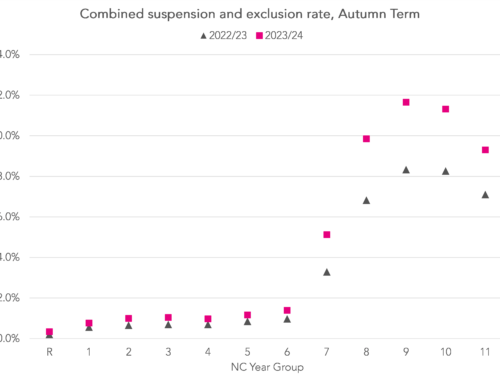

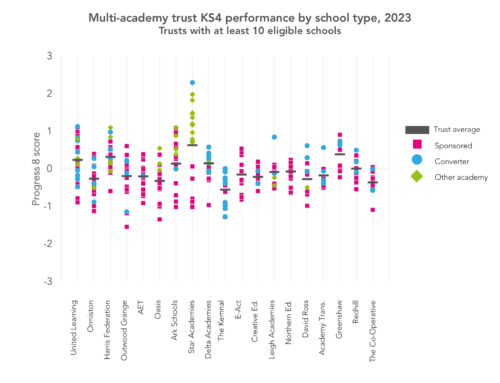
I’m glad you’re keeping an eye on this. My concern is that the EHCP is essentially a way a of rationing a scarce resource. As overall numbers rise and rationing prioritises those most in need, the proportion in special schools will rise. There are many children in mainstream schools who should have an EHCP but don’t. I wonder what numbers of EHCP applications would look like?
I would be interested to see the trend for the number of children with a statement/EHCP as a percentage of the student population along side these charts . I suspect that the numbers of students who have been able to get a statement/EHCP has fallen, and that this decline has been almost completely within mainstream schools. While the mainstream school numbers have declined, I would expect that the numbers in special schools have stayed the same, as those students whose needs are such that they need special school provision will still have been able to get a statement/EHCP. So, while the numbers in special school has probably remained constant, the proportion of all SEN students attending these schools has increased, purely as a result of the size the whole group of SEN students shrinking. The proportion of SEN students attending mainstream schools will have decreased accordingly.
“Department for Education data on SEN provision shows that the proportion of pupils with statements/EHCPs attending special schools has been increasing since 2007 [PDF]. By contrast, the percentage attending secondary schools has fallen by a similar amount.”
The word attending gives me pause here. I wonder if the intended implication is that students with EHCPs have therefore moved from mainstream to specialist provision? But Is that what the data tells us?
During my training as a SENCo (in 2011) I recall being informed of two key points: firstly, that we should expect EHCPs (or statements, then) to be issued less often for pupils whose needs could be met in mainstream provision, and therefore only pupils whose needs would have to be met through specialist provision could expect a plan to be issued. And secondly, that this was because the types of needs presenting in pupils were becoming increasingly complex, due to advances in medical care: children who previously would not have survived infancy, due to pre-maturity for example, were increasing the prevalence of developmental disorders in children, requiring specialist educational provision. This theory was presented to us trainee SENCos as one of the reasons for the move to EHCPs from statements, as an effort to co-ordinate the complexity of health issues inherent in developmental disorders.
I wonder if further analysis of types or levels of need associated to EHCPs might demonstrate any change over time? Is there any information that evidences an increase in developmental disorders and associated needs increasing in the population?
The points about the system for funding mainstream provision are so timely – the excessive strain on this very limited, time-lagged pot is all too real. In many schools, the pot does not cover the first £6000 of provision for the children with EHCPs already, let alone those whose needs are at SEN Support level. And this is without counting the pressure of Progress 8 as a signpost for where to deploy resources.
Having recently looked round the local high schools for my child with an EHCP in year 5 – it’s clear mainstream don’t want children who have learning needs.
It’s really upset me that because my child takes longer to learn concepts and requires smaller steps and increased repetition that she’s denied opportunities to learn by our education system.
It’s so heartbreaking.
I have two children who have SEN – The first was statemented and now has an EHCP (conversion). My youngest who is more needy in terms of intervention has an IEP but will not qualify for the EHCP. The goal posts always move away from those who are on the edge (the lost middle) when a new system is introduced. DLA and PIP being a prime example.
I’m not surprised that a large cohort of SEN children who have an EHCP are in special needs schools. It would be helpful if the IEP provision data was available. I imagine this would have increased in line with the loss of statements to EHCPs.
Great post, Dave.
My 15 year old is in year 11 and currently not at his school which is an academy under the rule of united learning and I have had a breakdown because of the lack of senco in the academy and they deny everything and it’s been soul destroying with the LA not having any clout at an academy.
We are at a second emergency review of the EHCP and an exclusion meeting on Monday will be heart breaking if they choose to get rid of him as I think they will .. it is 2020 and I have been humiliated lied too and they have taken no responsibility for his needs
No local solicitor (cumbria) will go near this type of law .., I wonder why .,
No money in it for them I was told
If I could afford a great solicitor i am sure they would love to represent my son. I hope no parent and child has to deal with an academy under a trust because I would remove them straight away , snobbery and ofsted tables are all they are interested in.